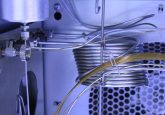Home urine analysis test for disease detection developed by engineers

Engineers from Stanford Biomedical Optics Group (Stanford, CA, USA) have developed a low-cost, portable urinalysis device, which could enable accurate home scanning for diseases.
The standard medical dipstick is a paper strip, which when immersed into fresh urine allows screening for numerous potential diseases through change in color – based on presence of disease-indicating biomarkers.
The results are then analyzed against a reference chart of shades of colours. Despite the simplicity of this test developed in the 1950s, there are limitations in terms of costs (time and money) and accuracy, as results are not always fully conclusive.
To overcome this, engineers from Stanford designed an inexpensive, portable test, based on the dipstick used by physicians that would allow easy and accurate urine testing at home.
By introducing companion software for dipstick urinalysis, they aim to tackle limitations surrounding: control of lighting conditions; precision of sample delivery; and accuracy of readout timing.
The team created a portable black box to cover the dipstick, and ensure consistent lighting conditions to avoid any effects from background on perception of the dipstick colour.
A multi-layered system was designed to load urine onto the dipstick, with mechanisms enabling a uniform volume of urine to be deposited, and in a timely manner.
A smartphone is placed on top of the black box with the video focusing on the dipstick inside; with a simple timing mechanism allowing results to be read as appropriate. The content of the video is then analyzed using custom-designed software.
The team is looking into how to proceed with the proposed design in practice and also into developing specific apps to accompany urinalysis. They are hopeful that it could enable patients to test urine accurately and reliably from their homes, while also potentially easing the workload on primary care physicians.
Source: Smith GT, Dwork N, Khan SA et al. Robust dipstick urinalysis using a low-cost, micro-volume slipping manifold and mobile phone platform. Lab Chip 16, 2069–2078 (2016).





